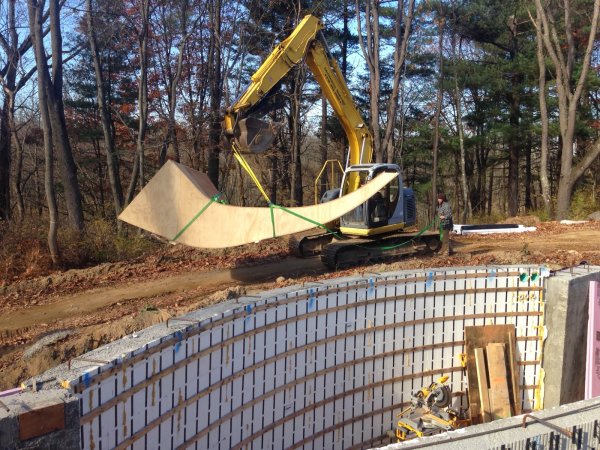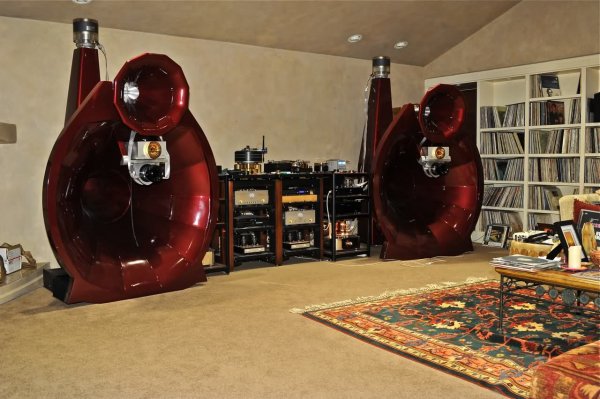Hello audioguy,
I re-read this thread and I noticed your post about multiple big subwoofers. Do you use the pair of dual-opposed 15" subwoofers in the rear as well as the front-firing 18" subwoofers in front routinely for music?
I am replacing the front DIY 18's with Seaton 18's. Having heard both, the Seaton 18's are MUCH cleaner than the DIY18's, extension is just as good are are MUCH, MUCH, MUCH better above about 50HZ. Once they arrive, there is no reason not to use all 4.
What was your progression of installation (if you did not install all four subwoofers at once)? For example, did you start with the 18" subwoofers first and then add the 15" subwoofers to further smooth and extend the bass response?
I had lots of subs prior to the Seatons, and for all of the wrong reasons, usually had them up front. I did have 4 very well known subs all installed at the same timebut that was before I new how to measure and interpret those measurements and they were not placed correctly. Two SubMersives in diagonal corners (front left and rear right) gave the exact same FR I previously posted. I then added 2 more SubMersives, with one SubMersive in each corner, ONLY because I am so OCD, I couldn't stand the asymmetry. (There is probably a 12 step program for that). As I was doing more upgrades (new speakers, preamp, etc) I made the (very poor as it turned out) decision to sell all of my SubMersives and build the 4 DIY18's and use the saving to pay for upgrades. Bad idea. I have owned a LOT of subs, and have yet to hear anything that can provide the impact, extension, clarity, and definition of Seaton Subs (as least at prices less than a new car). They are equally outstanding for either music (most important to me) or movies. So I first decided to sell two of my DIY subs and get two SubMersives thinking I could extract the best out of each and be a happy camper. Hasn't worked. I can't even begin to count the number of combinations and permutations of levels, delays, and positions to try and get what I wanted (which was the sound I had with my original 4 SubMersives). I gave up and ordered two of the Seaton 18's. I did that (vs 2 additional SubMersives) because the 18's are a bit more efficient in the lowest frequencies (which only matter for action movies) but above that are identical to the regular SubMersive.
If you did not have a home theatre and you were interested in optimizing solely for music, do you think you would use the same exact subwoofer arrangement? Or would the rear 15" subwoofers be unnecessary? Or might you remove the 18" subwoofers and put the dual-opposed 15" subwoofers up front?
As previously noted, I would never put two subs up front in a rectangular sealed room. I have not done an infinite number of rooms, but enough to say that in the 6 or 7 I had done, the front of the room was NEVER the best spot. I can't say there is not a room where they might not work perfect up front but that has not been my extension. Sometimes, however, they just need to go up front for spouse acceptance or because you want them there. EQ/digital room correction can solve a lot of problems. So to answer your question, I would put two subs as I had them originally configured - one in each diagonal corner.
Purely for music would you still want the frequency extension to be down only -5dB at 7Hz?
I wouldn't pay extra for it since 99.9% of music gets nowhere near that frequency. 15HZ to 20HZ would be more than adequate. But the Seaton SubMersives sort of throw that in for free. Because of the way my DIY 18's sound in the lowest frequencies, I did employ a high pass filter on them at about 25 HZ and it definitely helped. Even higher would have been better. But they still aren't right. There is still a thickness to the lower frequencies that is just wrong but is only noticeable on music, not movies.
PS: It is nice how well big-bore drivers solve the low-frequency extension question!
When I had my original 2 SubMersives, I had the same response: a 5db down at 5HZ. Hope this was helpful.









